Tank Break under Cambrai
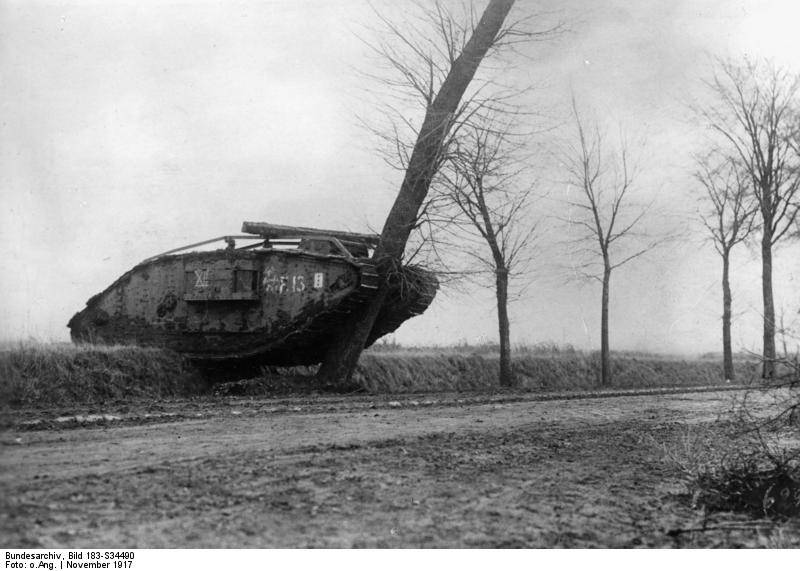
100 years ago, at the end of November - early December of 1917, another large-scale battle unfolded on the Western Front - the Battle of Cambrai. It was different in that it was the first in stories massive tank an offensive in which the British threw almost 400 combat vehicles into battle. They managed to break through the German defense in a few hours, but because of the inconsistency of further actions, everything again ended in another bloody massacre.
Preparation of the operation
The offensive under Cambrai (north of France) was the last Allied attempt by the Allies in 1917 to deliver a decisive blow to the German army on the Western Front. The two previous operations ended in complete failure. The so-called “Nivelles Offensive” (named after the commander of the French army who planned it), attempted in the spring in the area of the cities of Arras and Soissons, then went down in history as the “Nivelle Meat Grinder”. And the Battle of Paschendale (named after the village in the vicinity of Ypres), which was launched by the British Army in the summer and lasted until November 1917, led to insignificant results and even greater losses.
However, the British command was not reconciled and developed a plan for a new offensive, in which tank units were assigned the decisive role for the first time. It was already obvious that tanks were becoming an important means of breaking through enemy defenses. For this purpose, a tank corps was formed. However, during the offensive at Pashendale tanks could not prove themselves. The lowlands of Flanders due to torrential rains and artillery strikes turned into a sea of mud in which both tanks and infantry were bogged down. This discredited tank troops in the eyes of the soldiers. Even the tankers themselves were discouraged. Based on this experience, after a thorough reconnaissance, the British command decided to conduct a new offensive in a more suitable terrain — a short-cut and dry region, which was found south of Cambrai.
In addition, the British carefully approached the preparation of the operation - conducted joint training on the interaction of tank crews and infantry, worked out tactics to overcome the tanks deep and wide enemy trenches and anti-tank ditches. The tanks operated in groups of at least three cars, each of which carried a fasion on itself — a large bundle of brushwood fastened together with chains. One tank at first crushed the resistance of the infantry in the first line of the trenches, then the second - dropping into it the frontier, through which the third tank was to pass, dropping, in turn, the fashin already into the second trench, etc. Fighting vehicles crossed ditches in 3 meters in width and vertical obstacles in 1,2 meters, easily broke through wire barriers. This made a strong impression on the infantrymen, who were shocked by such capabilities of armored vehicles. The British infantry also acted in several groups, each of which had its own task. One group blocked enemy positions, the second - cleaned trenches, the third - was a support group.
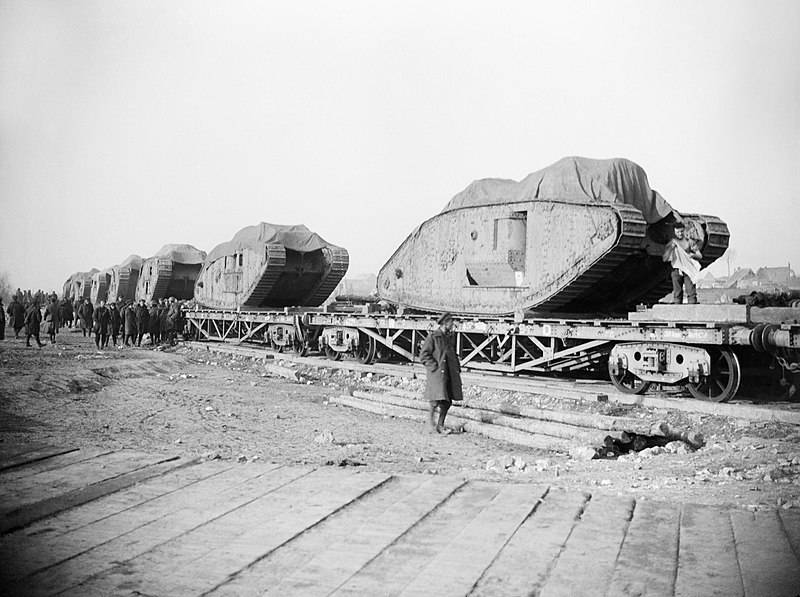
According to the plan of the British command, the impending offensive was supposed to begin without long artillery preparation. For the first time in history, the tanks themselves had to break through the enemy defenses. Then the battle was planned to enter into a breakthrough cavalry divisions, which should have been a rapid raid to capture Cambrai, the neighborhood and the ferry across the Sanse. After that, it was planned to go to the rear of the German troops at Valenciennes and encircle the German grouping.
In preparing the operation, the British strictly kept secrecy. Tanks were brought to the front in the evening and when armored vehicles were moving to the front line, they certainly opened heavy artillery and machine gun fire to drown out the roar of the engines. All these measures of disguise eventually bore fruit. The German command was unaware of the impending offensive, although shortly before the start of the operation two English “languages” under interrogation reported the exact date of the beginning of the British offensive - 20 November. The relief of the terrain was important for the tank breakthrough. The breakthrough site was chosen by chance: it was to the south-west of Cambrai on the front of the 12 kilometers there was a flat terrain, favorable for the movement of armored vehicles.
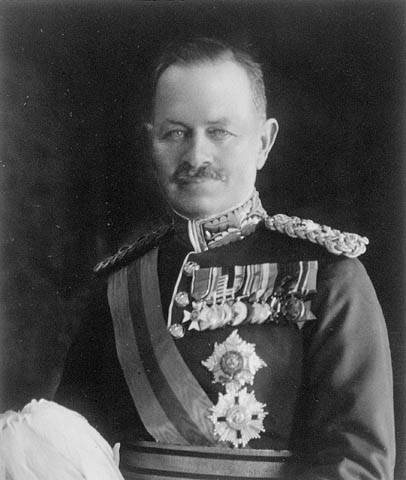
3 British Army Commander Julian Gedworth George Bing (1862 - 1935)
The forces of the parties
The British attacked General Julian Bing's 3 Army: 3, 4, and 6 Corps, cavalry and tank corps. Total army had in its composition 8 infantry divisions, 4 tank brigades (476 tanks), 3 cavalry divisions. The total number was 92 thousand people. The army was armed with 1536 machine guns, 1009 guns. At the breakthrough site also concentrated 1000 aircraft. The tank I tank was equipped with Mark I and Mark IV tanks.
The British were opposed by the 2-I German army, General Georg von der Marwitz: the 13 and 14 corps (36 thousand people). Total 5 Infantry, 1 Reserve and Landner 1 Division. Another infantry division was transferred to Cambrai from the Eastern Front. They were armed with 224 guns, 272 mortar and 900 machine guns. Already in the course of the battle, the German command pulled significant additional and reserve forces to this sector of the front in order to organize a counterattack. Thus, the German army began to count 16 divisions in the Cambrai region (about 160 in total, thousand people), 1700 guns, 1088 mortars and 3600 machine guns, over 1000 aircraft.
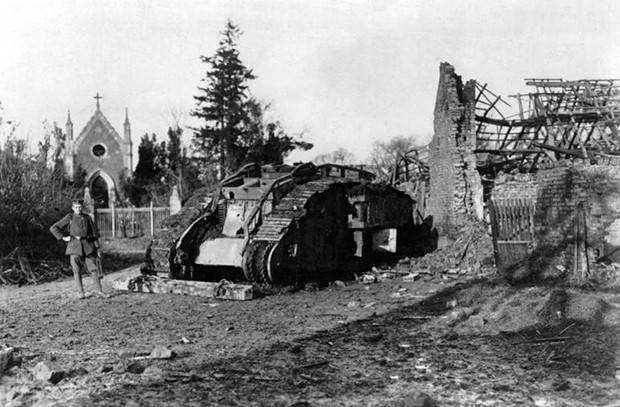
Padded English tank Mark I
British offensive
The British went on the attack at about 6 a.m. on November 20 without traditional artillery preparation, confining themselves to a rampart of fire, followed by tanks, and a little behind - infantry. At a front of 15 kilometers, 360 tanks simultaneously attacked. Against 2 German divisions in this sector were 7 British. The British used and Aviationbut due to adverse weather (fog), the aircraft did not play a big role. True, and German aviation could not actively attack the enemy. The tactics invented and worked out by the British worked perfectly. The sudden powerful attack of a large number of tanks caused a panic in the German troops. In the very first hours of the battle, the Germans lost most of their positions and strong points, and by noon the British managed to advance 6-8 km, breaking through all three lines of the German defense. By 13 o’clock on the first day of the operation, the gap of the German front reached 12 kilometers.
However, General Bing was late in entering cavalry into the breach, the attack of which began with a one and a half hour delay in 14 hours 30 minutes. In addition, the cavalry acted hesitantly. Time has been lost. The Germans managed to transfer reinforcements to the place of the breakthrough (separate battalions and small detachments on vehicles), which met the cavalry with strong machine-gun and artillery fire. As a result, the plan for a decisive breakthrough of the German front fell into the depths.
Thus, the British defeated the German divisions holding the defense, they suffered heavy losses. On the first day of the fighting, the British captured more than 8 thousand German soldiers, 100 guns and a significant number of machine guns, while suffering minor losses. At the breakthrough site, there were no longer significant German forces. However, the British were not able to use a favorable moment for the development of the offensive, which allowed the enemy to take retaliatory measures.
The British stopped the offensive by regrouping their troops, and only by the middle of the day on November 21 resumed the attack. But at this time the German command pulled reserves to Cambrai and was able to close the gap tightly. The Germans used self-propelled self-propelled guns to stop the new tank breakout — setting up field guns on trucks. Artillery was able to meet the British tanks on dangerous areas. By November 22, most tanks had spent fuel and ammunition, it was impossible to replenish them under fire, and the British infantry could not move forward without support, heavy positional battles began again. The Germans continued to stockpile reserves, preparing a counter-offensive.
Thus, having failed to use the breakthrough of the front, the British troops actually stopped. The fights again became positional, individual attacks no longer yielded significant results. The British advance was exhausted. By November 30, the Germans were able to completely stop the advancement of the enemy.
British offensive. Map source: https://ru.wikipedia.org/
German counter strike
After the British offensive actually ended, the German command pulled up the troops and prepared its attack. The German army in the area of Cambrai was driven to the 16 divisions. General Marwitz planned to surround and destroy all British troops wedged into the German defenses. Against the right flank of the British, the Germans aimed 7 divisions against the left flank - 4 infantry divisions with the aim of a powerful strike and encirclement of enemy troops.
November 30 German troops, after a strong artillery preparation, went on the offensive. The Germans actively used artillery and aircraft. By December 3, they had fought off the towns of Marquain, Kantin and Burlon, previously occupied by the British (in 4-6 kilometers west of Cambrai), but failed to surround the enemy. Using the remaining tanks, the British were able to avoid encirclement. 7 December, the British command completed the withdrawal of troops to their original positions. The battle is over. As a result of the counterattack of the German army, the British suffered heavy losses, having lost 9 thousand people only by prisoners, 100 tanks, 148 guns and hundreds of machine guns.
German counteroffensive
Results
The battle of Cambrai ended in a draw. The British broke through the enemy front, but failed to develop the first success, again stuck in positional battles. The Germans were able to quickly respond to the enemy breakthrough, took successful countermeasures, pulled down reserves and reinforcements. Then the Germans went to the counteroffensive with the aim of encircling and destroying the British assault force, but also without decisive success. The British army actually returned to its original positions. The British lost in the battle more than 44 thousand people, the Germans - about 40 thousand thousand soldiers.
The battle showed that tank formations will still show themselves in breaking through enemy defenses. Russian military historian, General Andrei Zayonchkovsky noted that "we can assume that the problem of army mechanization originates from here." However, in general, the interaction of various types of troops played a crucial role in the development of the operation. The tactics of combined arms combat based on the interaction of infantry, artillery, tanks and aircraft was further developed. Also, Cambrai was born anti-tank defense.
The battle of Cambrai showed that the initiative was being transferred to the Allies, the German army switched to strategic defense, although it also retained an offensive potential.
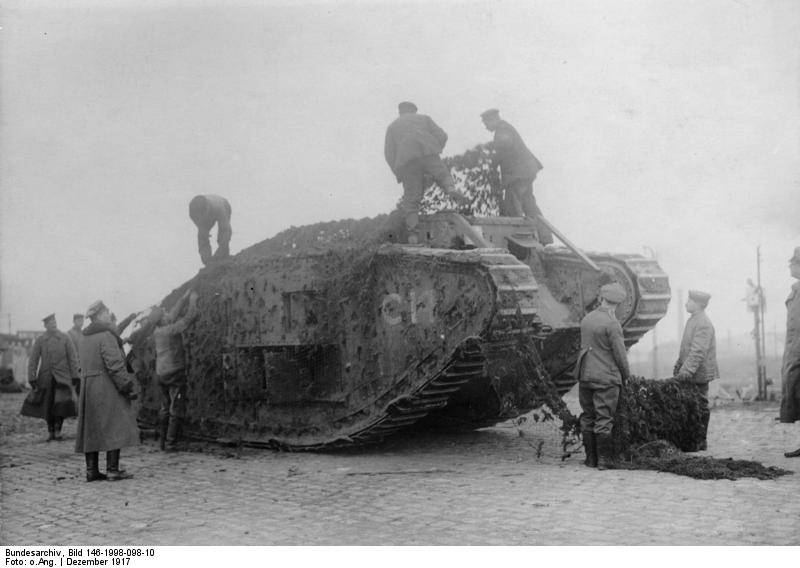
Masking tank
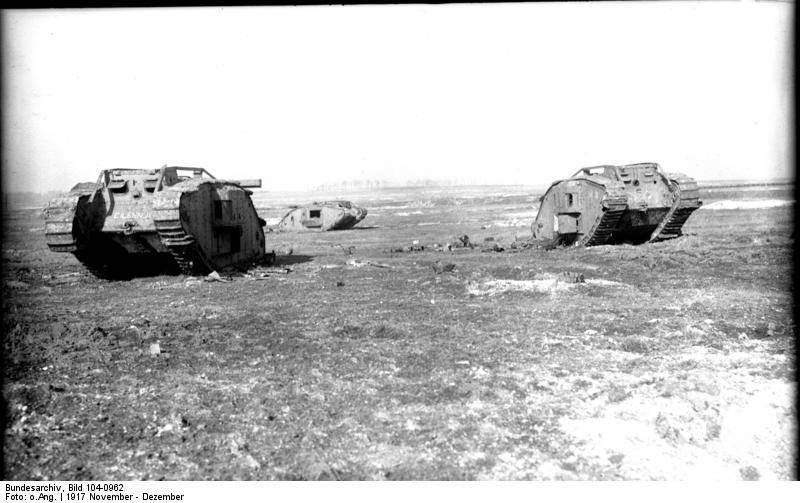
Battle of Cambrai Padded english tanks
- Alexander Samsonov
- 1917 Campaign
The transition of the Central Powers to a strategic defense
Entente plans for 1917 year: bet on a decisive victory in the war
Russian army to the beginning of the 1917 campaign of the year: the approach of the general collapse
Attack without shot: Mitav operation
How Germany began the unlimited submarine war
German submarine vs UK
How the German submarine fleet tried to crush the "mistress of the seas"
The United States used the myth of "inhuman" submarine warfare to oppose Germany
Caucasian front in 1917 year. Baratov corps offensive in southwestern Persia
Mosul operation. How the British, until recently, tried to use the Russian "cannon fodder"
The war of the USA and England against Europe and Russia for absolute power on the planet
USA and World War I
How did the USA profit from World War I
"War will end wars." USA in the First World War
World War I turned the United States into a leading world power
"Nivel Meat Grinder"
Tenth Battle of the Isonzo
The failure of the "offensive of Kerensky"
"It was no longer the former Russian"
As Greece at gunpoint forced to go to war
The revival of the Romanian army: the battle of Marashti and Maraseshti
Operation "Albion"
How the Germans stormed the Moonsund Islands
The bloody battle on the plateau Bainzitz
The defeat of the Italian army in the Battle of Caporetto
The defeat of the Italian army in the Battle of Caporetto. H. 2
"To die, but not to retreat!"
As the British offensive under Yprom drowned in mud
The bloody end of the battle of Paschendale
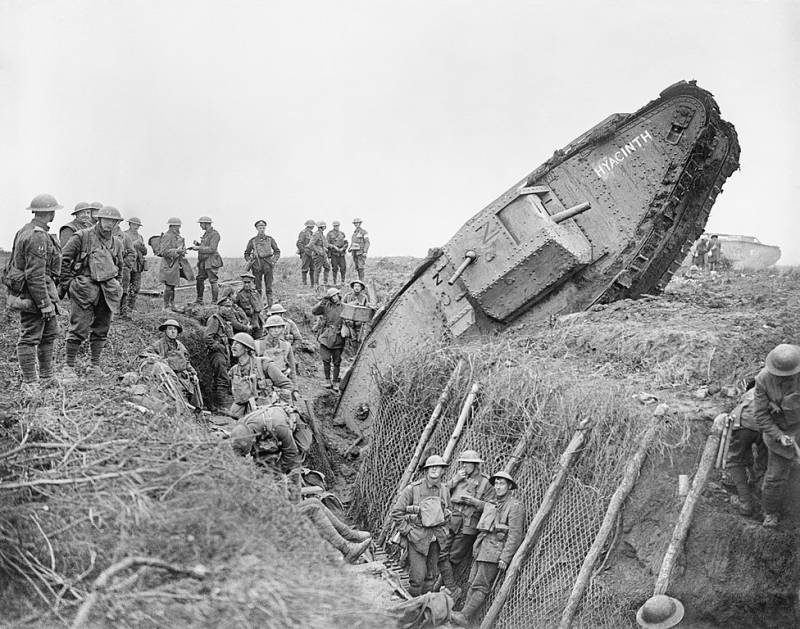
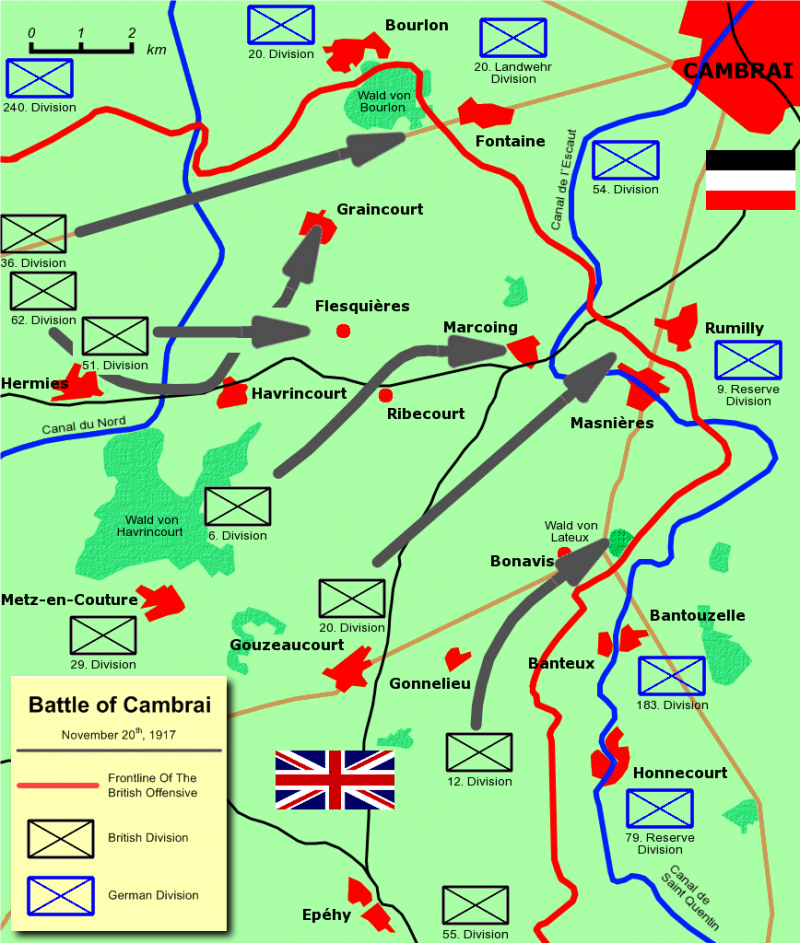
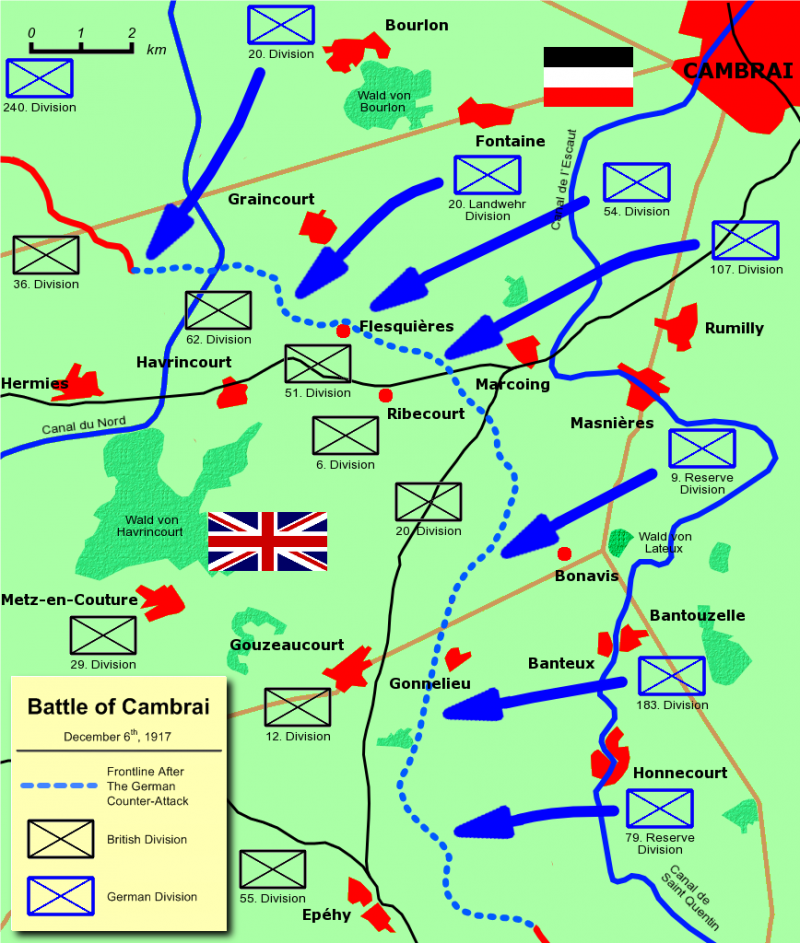
Information